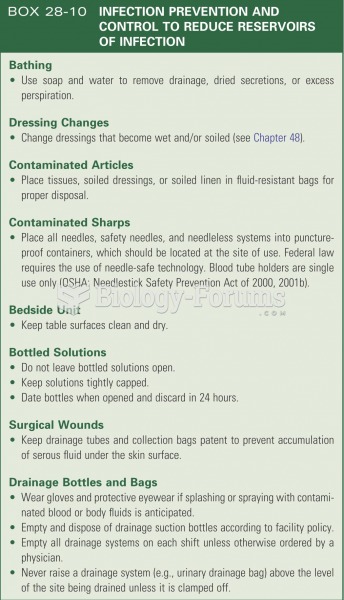Answer to Question 1
Correct Answer: 4
Rationale 1: Fluid overload does not cause erythema.
Rationale 2: Blocked lymphatic drainage does not cause erythema.
Rationale 3: Increased capillary permeability does not cause erythema.
Rationale 4: Increased blood flow causes warmth and redness.
Global Rationale: The central purposes of inflammation are to contain the injury, destroy the pathogen, and initiate repair of the area. The repair of the injured area can proceed at a faster pace by neutralizing the foreign agent and removing cellular debris and dead cells. Signs of inflammation include swelling, pain, warmth, and redness of the affected area. Histamine dilates nearby blood vessels, resulting in increased blood flow to the area, sometimes congesting the area with blood. This often results in the area feeling warmer than surrounding tissues.
Fluid overload does not cause this response, nor does blocked lymphatic drainage or decreased capillary permeability.
Answer to Question 2
Correct Answer: 1
Rationale 1: Erythema is caused by increased blood flow to the area.
Rationale 2: Increased capillary permeability does not cause erythema.
Rationale 3: Fluid overload does not cause erythema.
Rationale 4: Blocked lymphatic drainage does not cause erythema.
Global Rationale: The central purposes of inflammation are to contain the injury, destroy the pathogen, and initiate repair of the area. The repair of the injured area can proceed at a faster pace by neutralizing the foreign agent and removing cellular debris and dead cells. Signs of inflammation include swelling, pain, warmth, and redness of the affected area. Histamine dilates nearby blood vessels resulting in increased blood flow to the area, sometime congesting the area with blood. This often results in redness of the area. Leaky blood vessels are associated with swelling. The patient is not fluid overloaded nor is the distance from the heart a major factor in this response.







